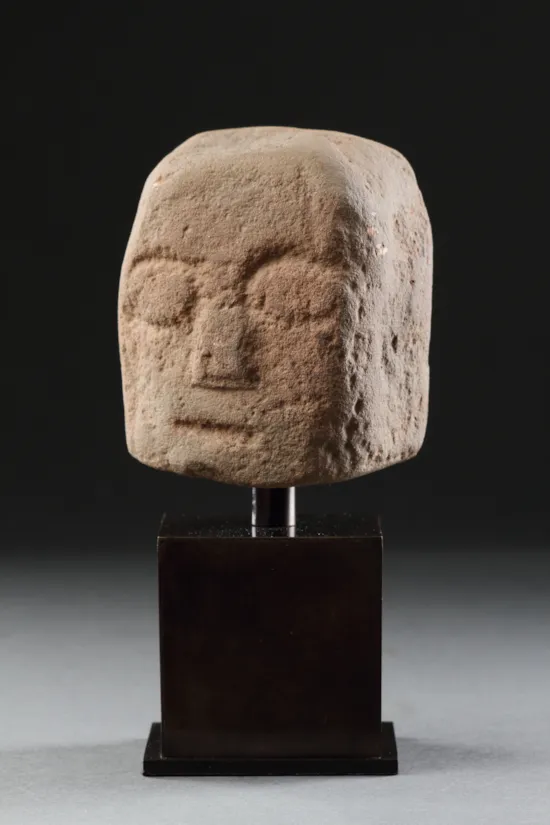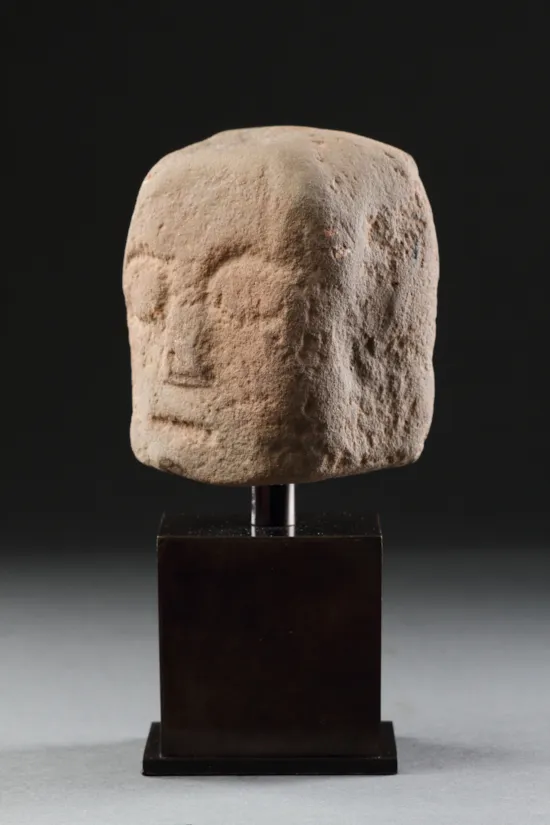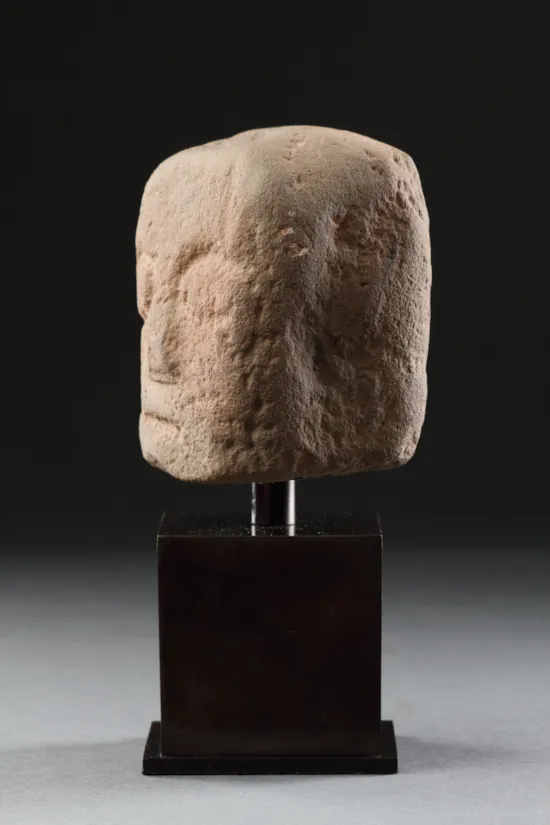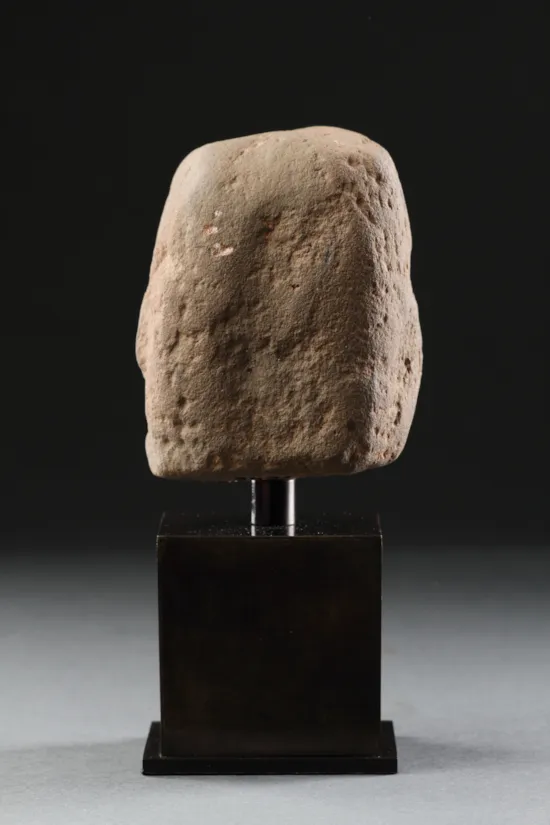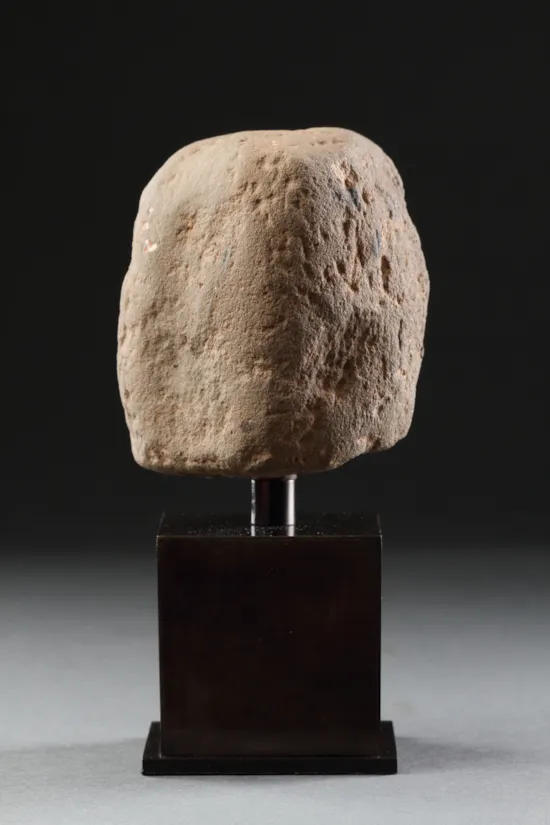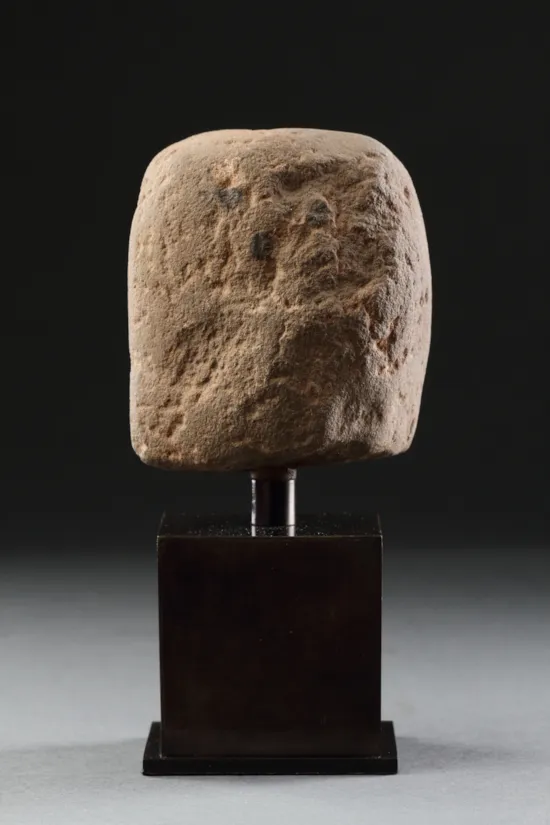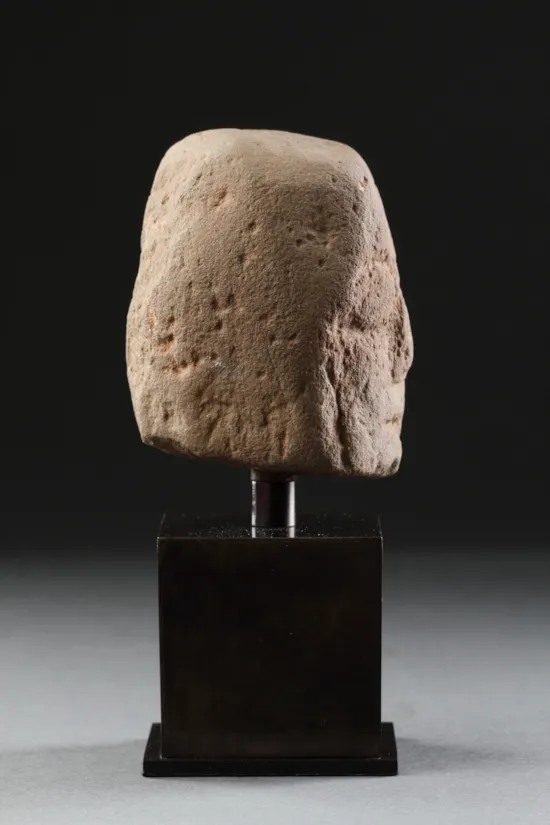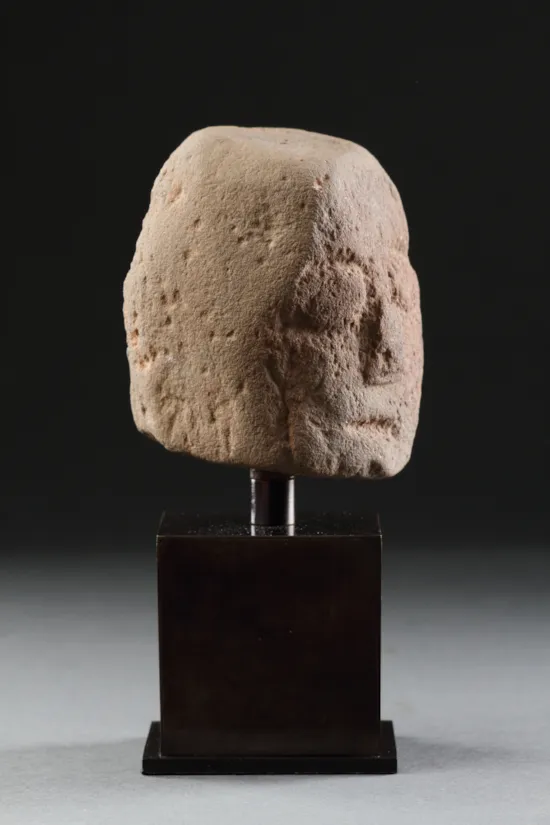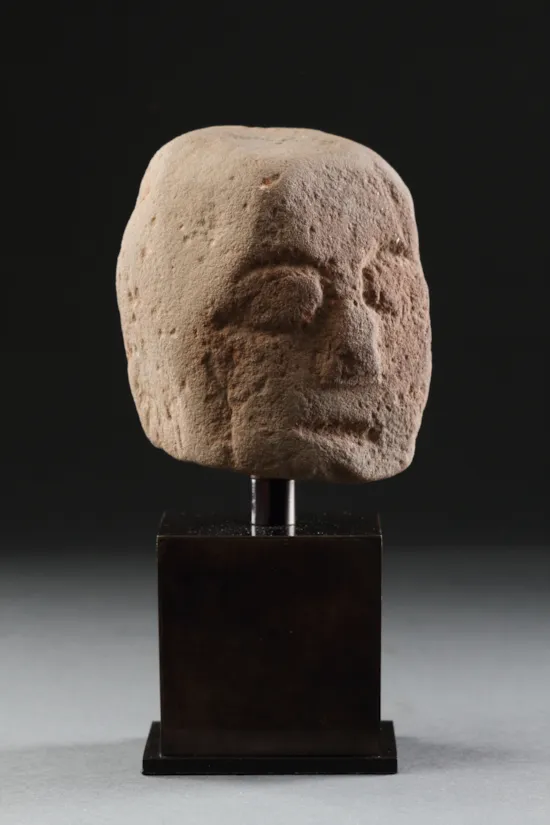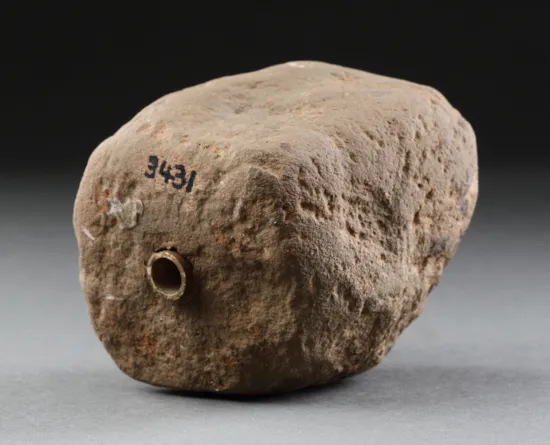A Rare Ancient British Small Celtic Red Sandstone Ceremonial Stone Head with Typical Ovoid Eyes Triangular Nose and Slash Mouth the Top Indented Possibly for offerings or libations
A Rare Ancient British Small Celtic Red Sandstone Ceremonial Stone Head with Typical Ovoid Eyes Triangular Nose and Slash Mouth the Top Indented Possibly for offerings or libations
Inventory number to base ‘3431’
1st Century BC - 1st Century AD
Size: 9cm high, 8cm wide, 7.5cm deep - 3½ ins high, 3¼ ins wide, 3 ins deep
Inventory number to base ‘3431’
1st Century BC - 1st Century AD
Size: 9cm high, 8cm wide, 7.5cm deep - 3½ ins high, 3¼ ins wide, 3 ins deep
A Rare Ancient British Small Celtic Red Sandstone Ceremonial Stone Head with Typical Ovoid Eyes Triangular Nose and Slash Mouth the Top Indented Possibly for offerings or libations
Inventory number to base ‘3431’
1st Century BC - 1st Century AD
Size: 9cm high, 8cm wide, 7.5cm deep - 3½ ins high, 3¼ ins wide, 3 ins deep
Inventory number to base ‘3431’
1st Century BC - 1st Century AD
Size: 9cm high, 8cm wide, 7.5cm deep - 3½ ins high, 3¼ ins wide, 3 ins deep
By the 3rd century BC, the Celts were the masters of Europe with territories stretching from the Baltic to the Mediterranean and from the Black Sea to the western coasts of Ireland. Driving light two-wheeled war chariots, tired with iron which metal they were first to discover, they swept across huge tracts of land intimidating and defeating all who resisted them. Their languages can still be heard today in Welsh, Irish and Scottish Gaelic, and in Breton. Europe is studded with place names of Celtic origin and the old rivers which were regarded as sacred by the Celts, were also named by them. Real severed human heads were venerated especially in conjunction with sacred springs, but those fashioned from stone or wood, pottery or metal were believed to possess ancient apotropaic powers. This iconic countenance with huge riveting deeply cut eyes was probably from a shrine or altar where it could be worshipped and afford protection to the community.
Said to have been found south of Cornovian Territory in the Area of the Dobunni now known as Warwickshire
Ex Private English collection acquired from Chris Rudd Antiquities 1998
Ex Private London collection
‘When their enemies fall they cut off their heads and fasten them about the necks of their horses’ Diodorus Siculus 5.29.
Ex Private English collection acquired from Chris Rudd Antiquities 1998
Ex Private London collection
‘When their enemies fall they cut off their heads and fasten them about the necks of their horses’ Diodorus Siculus 5.29.
A Rare Ancient British Small Celtic Red Sandstone Ceremonial Stone Head with Typical Ovoid Eyes Triangular Nose and Slash Mouth the Top Indented Possibly for offerings or libations

SOLD
